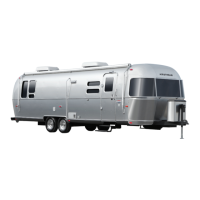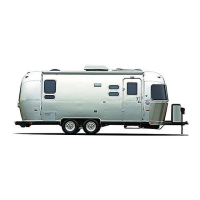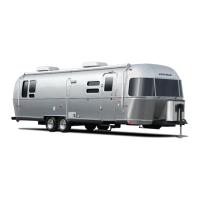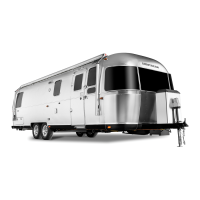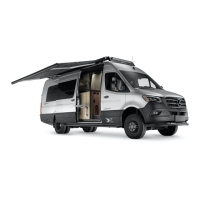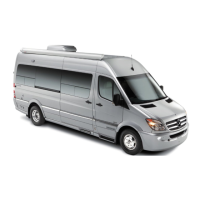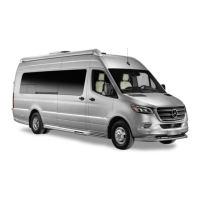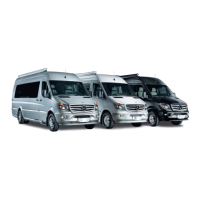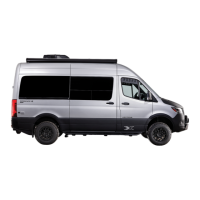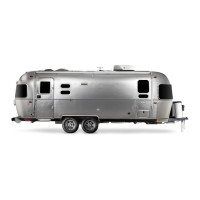Do you have a question about the Airstream INTERNATIONAL TRAILER and is the answer not in the manual?
Details the duration and scope of the limited warranty provided.
Outlines owner responsibilities for trailer upkeep and care.
Provides steps for obtaining warranty repairs and contacting service.
Lists items and conditions not covered by the limited warranty.
Details how to contact Airstream for major service and factory support.
Instructions for reporting potential safety defects to NHTSA and Airstream.
Recommends essential towing vehicle features for safe and effective trailering.
Explains the function and synchronization of electric trailer brakes with the tow vehicle.
Advises on proper weight distribution and avoiding rear-mounted items to prevent sway.
Details methods for weighing the trailer and determining tongue weight.
Step-by-step guide for properly connecting the trailer to the tow vehicle.
Offers advice on safe driving, lane changes, and managing trailer behavior.
A comprehensive list of items to check before departing for a trip.
General safety guidelines and warnings for camping operations.
Guidance for parking and setting up for short overnight stays.
Instructions for leveling and stabilizing the trailer for longer stays.
Details on connecting to city water, power, and sewer facilities.
Advice for operating the trailer in sub-freezing temperatures to prevent damage.
Recommendations for washing, waxing, and cleaning the trailer exterior.
Information on maintaining the trailer's structural chassis and frame components.
Instructions for using and safely operating the trailer's power jack.
Guidelines for checking tire pressure, wear, and rotation.
Details on the trailer's axle system, alignment, and bearing maintenance.
In-depth explanation of electric brake operation, synchronization, and troubleshooting.
Procedures for adjusting, cleaning, and lubricating trailer brakes.
Common brake issues and their potential solutions.
Instructions for cleaning and maintaining interior upholstery fabrics.
Guidance on cleaning walls, carpets, floors, counters, sinks, and showers.
Explains the function and use of the central monitoring and control panel.
Details on the battery disconnect switch, storage, and interior electrical systems.
Procedures for testing, cleaning, and replacing batteries in the smoke alarm.
Information on the LPG system, fill valves, regulators, and safety rules.
Covers self-contained water systems, pump operation, and strainer cleaning.
Addresses common issues with the water pump and provides repair guidance.
Steps for disinfecting the potable water system with bleach.
Instructions for connecting to an external city water supply.
Details on holding tanks, dump valves, deodorizers, and cleaning procedures.
Comprehensive guide to preparing the water and waste systems for winter storage.
General explanation of the 12-volt and 110-volt electrical systems.
Guidelines for checking, charging, and maintaining the trailer's battery.
Information on the converter, 12-volt distribution, and 110-volt panel.
Diagrams illustrating the trailer's electrical circuits and component locations.
Explains the function, testing, and importance of the GFCI breaker.
Details on operating and maintaining the trailer's air conditioning unit.
Instructions for operating the furnace and important safety warnings.
Guidance on using the gas range and oven, including manufacturer information.
Explains how the refrigerator works and the importance of leveling.
Instructions for operating the water heater and associated safety cautions.
How to operate and clean the roof vent fan for airflow.
Technical specifications including length, width, height, GVWR, UVW, and NCC.
Procedure for setting the correct hitch ball height for towing.
| Category | Motorhomes |
|---|---|
| Manufacturer | Airstream |
| Model | INTERNATIONAL TRAILER |
| Microwave | Yes |
| Toilet | Yes |
| Shower | Yes |
| Awning | Yes |
| Exterior Material | Aluminum |
| Length | Varies by floor plan (23 ft - 30 ft) |
| Width | 8.5 ft |
| Weight | Varies by floor plan |
| GVWR | 6, 000 lbs |
| Sleeping Capacity | Varies by model |
| Air Conditioning | Yes |
| Heating | Yes |
| Stove | Yes |
